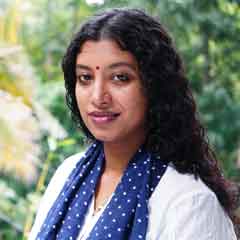Amid Cypress trees, a 151-year-old church and a horse's tomb near Kuttikkanam hold many tales

Mail This Article
Those taking the Kottayam-Kumily road notice a sudden drop in temperature on reaching Kuttikkanam. A few kilometres down the Kattappana route, the topography suddenly changes. In Pallikunnu, nestled amidst the Cypress trees, is an ancient European church that looks straight out of a surreal painting.
The history of plantations and Europeans in the high ranges of Kerala is entwined with that of the 151-year-old church and its 16-acre plot.
Except in the COVID-hit 2020, the St George CSI Church, Pallikunnu, has had visitors from Europe. Those who arrive to get a glimpse of the place ones inhabited by their forefathers and to find traces of their memories usually never go back disappointed. A rare British cemetery, on one acre on the premises, has 38 tombs. Of these, 36 are of Europeans and one of an Indian priest. One is the tomb of a horse.
When London-native Rosie Nichol visited the church last year, church authorities helped her find the baptism records of her father and aunts. “Rosie’s grandfather Christopher Nichol was a planter who stayed here even after most Europeans left the place. He stayed in the Koduvakaranam estate during 1959-69 when the baptism of his son and daughters was held. We still have all records of the events – marriage, baptism and funeral – held during that period,” said church vicar Father Jaishingh Norbert.
Rosie is among the several Europeans who have come from another part of the globe in search of the history of their forefathers. Each visit throws light on the unexplored history of Peerumade, once the favourite place of Travancore royals and the Europeans alike. In 2018, Jane, a descendant of British planter Jack Dean Troment, visited the church to look for details of a member of the Dymock family in England. A nearby place, locally known as ‘Dimukku,’ got its name from this Dymock family, Fr. Norbert said.
The church was constructed in 1869 by CMS missionary Henry Baker Junior. The church followed the Anglican traditions for the European planters and their families. It soon opened to Tamil and Malayali estate workers, though with separate time slots for Europeans.
It is said that a sexton would stand guard to ensure that others would not enter the church during the 8.30 am mass on Sunday, reserved for Europeans.

Buried history
Of the 38 tombs, one is particularly notable. White mare Downy was the pet horse of John Daniel Munro who was instrumental in bringing plantation crops to Munnar and Peermade hills. He had constructed roads connecting Kottayam to Munnar. When Downy died, it was given a resting place just opposite the tomb of J D Munro who passed away in 1895.
Fr Nallathampi, who was brought in to give sermons for the Tamil populace, is the only non-European buried in the British cemetery, in 1901. The first funeral in the British cemetery was that of Lousia Jilma Clark on May 16, 1877.

As per records, the church was consecrated on February 10, 1869. It was renovated in 1994 but the basic structure and wooden parts were kept intact. CSI priest Fr Binu Kurivila, who lived in a building on the church premises from 1990-96, while his father P T Kuruvila was the priest at St George Church, said the church had the shape of a cross when viewed from above.
“Some renovations were made during the 90s. It has a peculiar wall of thickness of two-and-half feet and is made of ‘surki’ and rock. It is basically two parallel walls of one-feet thickness with a half feet gap in between. Some of the old bungalows in the area have such a structure. The air in the gap will get heated up with hot air from the fireplace and this will keep the interiors warm. Though the fireplace is missing from the main structure now, the interiors of the church are still warmer than the other buildings in the area,” he said. The furniture such as the glass worked altar, pews, baptismal font, pulpit etc are as old as the church.

Fr Norbert said the peculiar landscape of the area was due to the presence of a variety of Cypress trees. “These trees are assumed to be imported from England. Now, we have taken special care to replant its saplings on the premises itself. Even decade-old trees look like a shrub, so existing Cypress trees might be very old,” he said.
Around 15.62 acres of land was handed over on lease of 12 ‘ana’ per acre to CMS representative Henry Baker Junior by the then Diwan of Travancore, T Madhava Rao, in 1869. Later another, 1.47 acres too were allotted. As much as Rs 950 was spent on the construction of the church and a mission bungalow. Father Norbert said the place was termed ‘Church hill’ by Europeans, which eventually became ‘Pallikunnu.’ The Europeans continued to be members of the church till the late 60s.
(Jisha Surya is an independent journalist based in Thiruvananthapuram)


